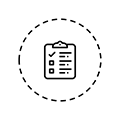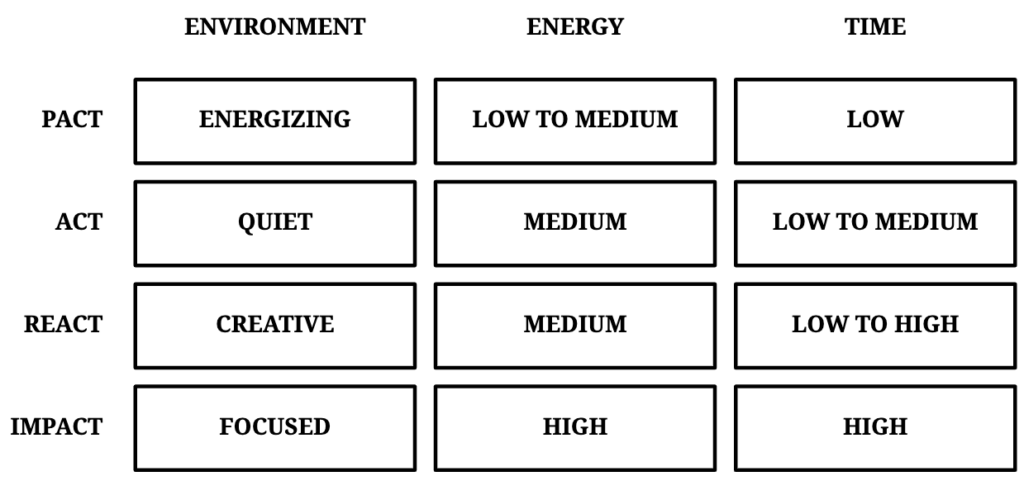Many people manage their tasks using a to-do list. Everything they need need to work on at some point ends up on that list, and they measure their productivity by looking at the number of tasks completed in a certain amount of time. While I’m a big fan of checklists—which have a clear objective—I don’t think to-do lists should be managed the same way a shopping list would. It’s great to have a place to dump all your tasks in, but how do you decide what to work on next?

Three factors to decide what to work on next
There are many decision-making frameworks such as the Eisenhower matrix of prioritisation, where you categorise your tasks based on whether they are urgent and important, important but not urgent, urgent but not important, or neither urgent nor important.
There is also the DECIDE framework of decision-making. Most of these are pretty solid, but they fail to take into account the inner workings of the human mind and the complex factors that impact our levels of productivity.
Besides deciding on a rational level what you should work on next, you need to consider the following factors.
- Environment. Where are you working from? Are you on-the-go, working on your phone, or comfortably installed in front of your computer at work? Are you working from home? If so, is it quiet, or are your kids running around? Are you in a busy coffee shop, or in a coworking space? What tools do you have access to? All of these matter to decide what to work on next. For example, a designer may need a tablet for certain tasks. Some people work best with a bit of ambient noise. Research shows that your work environment has a huge impact on your performance and productivity. Depending on where you’re working from, you may choose tasks that may fit your current environment better, such as reading a report while you’re commuting, or doing some deep work while you’re working from home.
- Energy. Similarly, your energy levels will impact your productivity and should help you decide what to work on next. Are you feeling tired or stressed? Creative and energised? Some tasks may require little cognitive effort, some may be more fun than others. Depending on your energy levels, you may pick a task that’s more exciting or less intense.
- Time. Finally, it may seem obvious but how long a task will take to complete is an important factor to decide what to work on next. We are notoriously bad at multitasking, so it’s crucial to pick a task that is doable in the next uninterrupted block of time you have to work on it.
Considering these three factors is especially important for personal projects, where you don’t have a specific deadline or objective ranking in terms of how important an overall project is.

In the context of mindframing
If you have a long term objective, such as learning how to code or launching a new product, it may be hard sometimes to figure out what to work on next. The three previous factors also apply in the context of mindframing, a personal growth framework designed to achieve your long-term goals.
For those who are not familiar with mindframing, there are four steps to the method: Pact, Act, React, Impact.
- Pact. Making a commitment to dedicate a certain amount of time or a certain number of repetitions towards your goal, for example #100daysofcode or #200wordsaday.
- Act. Simple and repeatable activities that will bring you closer to achieving your goal. This step works best with time blocking.
- React. Self-reflection to consolidate what you learn and to adapt in case your approach is not working. While you can keep these to yourself, it’s even better if you share your progress in public.
- Impact. A more challenging projects building on everything you learned in the first phases, such as your first web application, an ebook, a marathon.
As you can imagine, each of the PARI phases requires a different environment, amount of energy, and amount of time. Not everyone will have the same criteria, but here is an example of what my work productivity matrix looked like when I was learning how to code.

The Pact phase didn’t take that much time and energy, but it helped to be in an energising environment with friends who were also excited about the prospect of learning how to code. For the Act phase, I needed a quiet environment to be able to hear the lectures properly, and I definitely needed more time and energy.
For the React phase, the time commitment varied greatly depending on whether I was writing a blog post or just sharing a tweet about my progress. Finally, for the Impact phase, I needed to be extremely focused. In my case, this doesn’t mean quiet—I actually focus best with a bit of ambient noise around me when it comes to creative work.
Using the three factors I described before, it became easier to decide what to work on next. Quiet environment, not too tired, and a decent amount of time? I’d go through a tutorial for the Act phase. In a busy coffee shop and not too much time before my next meeting? I’d write a quick tweet with the top things I had learned that week. In the same busy coffee shop with a bit more time? That sounds like a good time to write a blog post.
Obviously, these three factors on their own are not enough to decide what to work on. As I mentioned, the Eisenhower matrix of prioritisation and the DECIDE framework of decision-making are great tools in a rational work environment. But for personal projects, where there’s no measurable sense of urgency or importance beside your desire to grow as a person, considering your environment, energy levels, and time available is a great way to decide what to work on next.
